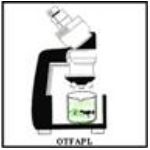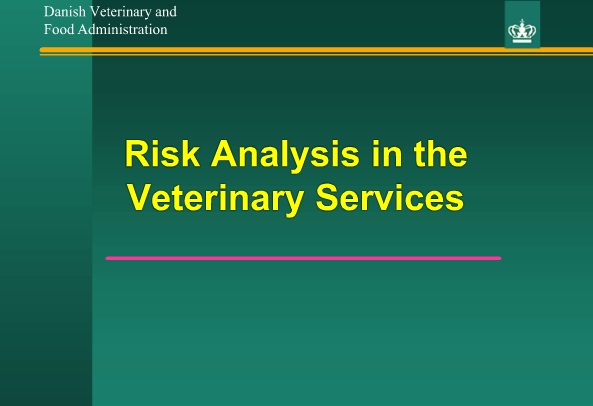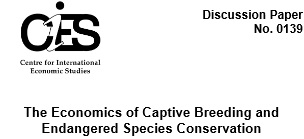AGLS 6502 Lecture 4.1 - History and Wildlife
Wildlife may be considered as any animal form which has not been commercially domesticated and exist in nature as uncontrolled breeding populations. These animals range from butterflies to invertebrates to any of the thousands of aquatic species [both terrestrial and marine].
Wildlife or wild animals are the repository of animal genetic material on earth which have evolved over millions of years. It consists of species which have survived or evolved over the last 10,000 years or so. To take a homocentric approach, one may also say that the wild species existing today have survived mankind’s influences and encroachments over the last 2000 years, but more so the last 300 to 400 years.
Wild animals and wild living things are the genetic dictionary on planet earth. They are also the libraries of life on this earth. The only problem is that the contents of this dictonary have not been properly compiled and indexed, but as we speak some lifeforms (and information on them) are being lost forever through extinction. This is not in mankind’s best interest. We therefore need to study, protect and conserve our collective wildlife resources for our generation and for future generations to come.
Can you imagine what life on Earth would be like without “ Butterflies and insects “?
.......Without a variety of food [ fruits and grain ] of plant origin !!
Why?......Because the Butterflies and Insects pollinate the plants !!!
4.1.2 What Is Wildlife Farming?
Wildlife farming can be considered as any organized attempt at rearing animal species which have been traditionally non-domesticated.
The following is a brief list of the role, functions and benefits of wildlife and wildlife farming to mankind:
- Production of food and commercial [known and unknown] products;
- Economic Opportunities;
- Rural Development;
- Recreation and Aesthetics;
- Religious activities;
- Biological Pest Control;
- Integrated Farming;
- Education and
- Conservation of Animal Species and Animal Genetic Material.
Wildlife Management contains the following activities:
- management of exploited wildlife species;
- management of overabundant wildlife pests;
- management of scarce and declining wildlife;
- management of wildlife in parks and nature reserves and
- the continuous process of seeking finance and recources to fund wildlile management activities.
Laws governing wildlife
(I) Rationale Behind Veterinary and Animal Health and Trade Regulations:
- To prevent the spread of food borne diseases.
- To prevent the spread of animal diseases from one country to another.
- To control the spread of diseases from one farm to another.
- To protect humans from the spread of zoonoses.
- To provide trade protection.
- To certify specific disease free areas of the world.
- To protect endangered species.
(II) Veterinary Regulations for International, Domestic and Wildlife Trade
Local Regulations
- Veterinary Service
- Animal Health Ordinances
- Veterinary Public Health
- Public Health Ordinances
- Governing Abattoirs and Animal Slaughter Houses
- Ante and Post Mortem Inspection of animals and meats
- Wildlife Act and Animal Conservation Acts
International Regulations and Conventions
- International Regulations Governing Trade in Animals and Food of Animal Origin
- Regulations governing the Trade in Endangered Species
- Convention on International Trade in Endangered Species of Wild Fauna and Flora ( CITES Agreement)
Readings:
Presentation: The need for veterinary services in international trade |
VIdeo Aid: About CITES - Endangered Species and the Traveller |
4.1.4 Wildlife Activities and Zoos in the Caribbean
| Guyana: The Georgetown Zoo | During the early half of this Century this facility was very important for Zoology Research in the Commonwealth Caribbean . It collaborated in the production of a very useful Journal- Journal of British Guyana Museum and Zoology
This Zoo is at present in a state of disrepair and efforts are being made by the San Diego Zoo at providing it with assistance. |
| Trinidad | 1. The Emperor Valley Zoo 2. The Wild Fowl Trust 3. The Wildlife Farmers Association 4. The Hunters Association 5. The Wildlife Section of the Forestry Division, Ministry of Agriculture-Lands and Marine Resources 6. The Field Naturalist Club of Trinidad and Tobago- They have been in existence for almost 100 years and produce a Journal. 7. The Tropical Forage- Animal Production Laboratory (TFAPL) 8. Asa Wright Nature Reserve |
| Barbados | 1. The Barbados Nature Park: owned and operated by Mr. Jean Balu 2. The Barbados Zoo: Oughterson House and Zoo Park. |
| Cuba | Four (4) Zoos Location 2: National Aquarium Location 3: National Zoological Park Location 4: Zoological Park of Santiago de Cuba |
| Dominica | The Dominica Parrot Exhibit [Endangered] A Small Exhibit at the Botanic Gardens, Roseau, Dominica |
| Dominican Republic | Parque Zoologico National, Arroyo Salado |
| St Lucia | A Small Wildlife Exhibit The Forestry Division, Ministry of Agriculture, St Lucia |
Jamaica |
The Hope Zoo The Botanic Gardens, Kingston |
The history of Zoos would now be presented to you in a brief chronological order as follows:
- 8000 BC: Domestication of Goats and Sheep;
- 4500 BC: live animal collections in Persia ; Egyptians kept wild dogs and cats;
- 1494 BC: “ Hatshepsut ( hat-soup-it) “ Queen of Egypt collected animals from Somali-land in Eastern Africa [ baboons, green monkeys, greyhounds, leopards and a giraffe]; these animals were displayed in the Temple of Amon in the city of Karnak, Egypt, in the Royal Garden of the Royal Temple; this is considered the first historical account of the existance of a Zoological Park;
- 1478 BC: Thothmes III, the nephew of Queen Hatshepsut developed his formal Zoological Garden near the Temple of Amon [ these included leopards, baboons, elephants, brown bears, lions, giraffes, antelope and colorful birds.
- 1100 BC: Chinese emperor Wen Wang built a 900 acre walled park;
- 6th century BC: Zoo in Babylon existed;
- 330 BC: Alexander the Great of Macedonia maintained a collection of African and Asian Elephants, bears , monkeys and other animals; Aristotle is tutor was the first person in recorded history to make scientific observations on natural history using these captive animals;
- 200 BC: Hannibal kept a famous collection of elephants which he used to cross the Alps, when these animals were not in use they were kept on exhibit in a field outside the city of Carthage;
- AD 50: Roman Emperor Nero kept a pet tigres “ Phoebe” to which he fed people who angered him;
- AD 98 to 117: Roman Zoo Emperor Trajan kept animals in captivity;
- 775: Charlemagne kept a pet elephant which he received from the Caliph of Baghdad;
- 1050: William the Conqueror of England received a bear from his eldest son as a gift;
- 1254: Henry III of England received as a gift the first elephant brought to England; Leo X set up wild animal collections at the Vatican consisting of monkeys, civets, lions, leopards, bears and an elephant, many Cardinals also began their own private collections, with one collecting humans as slaves from different parts of the world;
- 1333: In France, Phillip VI had an animal collection at the Louvre;
- 1414: Yung-Lo Chinese Emperor during the Ming Dynasty brought a Giraffe to Peking.
- 1500+: Montezuma created a zoological park and botanic gardens in what is now the location of Mexico City;
- 1591: Hernando Cortez was the first European to see Montezuma’s Zoological Collection at Tenochtitlan, now Mexico City;
- Early 1700s: In France, Louis XIV , had organized animal collections at Versailles in which trees were planted as part of the exhibits;
- 1752: The first Modern Zoo in Vienna , Austria
- 1765: the Imperial Menagerie, Vienna;
- 1775: the Zoo in Madrid;
- 1793: Zoo at the Jardin des Plantes ( Botanic Gardens) Paris;
- 1828: Reagents Park Zoo ( The London Zoological Society formed) London;
- 1835: The Bristol Zoo ( The Bristol Zoological Society);
- 1873 (1864?): Central Park Zoo ( New York);
- 1868: Lincoln Park Zoo (Chicago);
- 1874: The Philadelphia Zoo;
- 1887-89: Smithsonian Zoo ( Washington D.C.);
- 1899: The Bronx Park, the Bronx Zoo,The New York Zoological Society - The Wildlife Conservation Society ( the Bronx Zoo );
- 1921: Instituto Butanta: Sao Paulo, Brazil- Collection and work on venomous animals;
- 1924: American Association of Zoological Parks and Aquariums [ AAZPA]
- 1947: The Emperor Valley Zoo (Trinidad) [The Zoological Society of Trinidad and Tobago];
- 1970+: Most Zoos in the US began the formation of Education Departments
- 1980-81: The Miami Metro Zoo ( Miami, USA, the First Cageless Zoo in the World]
The main sources of information for this section have been the following:
- 1] Anthony D. Marshall (1994) , Zoo: Profile of 102 Zoos, Aquariums and Wildlife Parks in the United States
- 2] Gordon Hubbell (1996), Ecology of Captive wildlife-EVS300, Barry University, Miami, Florida.
- Clark, T. W; Reading, R. P. and Clarke, A. L. (Editors) (1994): Endangered Species Recovery. Island Press, Washington D. C, USA, 18 chapters >439 pages.
- Primack, R (1995): Primer of Conservation Biology, Sinauer Associates, Sunderland, Massachusetts, USA
- Nyhuis, A. W. (1994): The Zoo Book: A Guide to America’s Best. Carousel Press, California, USA. >262 pages.
- Caughley, G and Sinclair, A ( 1994): Wildlife Ecology and Management Blackwell, Massachusetts, USA.
Helpful Links, Photos, Videos and Multimedia
Video Aid: The Genetics of Wildlife Conservation
Controversial issue of farming lions for sport hunting by The Guardian (UK).

Interesting paper on supply-side policies to help curb poaching
Helpful website: What is CITES (the Convention on International Trade in Endangered Species of Wild Fauna and Flora)
Video Aid: A brief history of zoos is shown during the first minutes followed by a look at the role of zoos.




